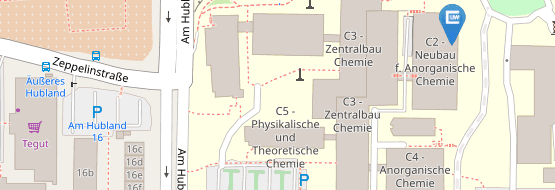Just Published in Chemistry - A European Journal
25.01.2017A Cyclic Alkyl(amino)carbene as Two-Atom π-Chromophore Leading to the First Phosphorescent Linear CuI Complexes
Authors: Markus Gernert, Ulrich Müller, Dr. Martin Haehnel, Prof. Dr. Jens Pflaum, Dr. Andreas Steffen*
Abstract: The members of a series of linear and trigonal copper(I) complexes bearing a cyclic alkyl(amino)carbene (CAAC) ligand show surprising photophysical properties compared to those of the corresponding N-heterocyclic carbene (NHC) complexes. Whereas the linear NHC complexes [CuX(NHC)] are almost non-emissive, [CuX(CAAC)] (X=Cl, Br, I) and [Cu(CAAC)2]PF6 show very bright emissions from their triplet excited states in the blue to green region, displaying quantum yields of up to 65 % in the solid state, even though the π-acceptor comprises only the carbene C and N atoms with no other π conjugation. [Cu(CAAC)2]PF6 is the fastest CuI-based triplet state emitter characterized to date, not displaying thermally activated delayed fluorescence (TADF), with an intrinsic lifetime of only 10.6 μs, that is, kr=9.4×104 s−1, competitive with many PtII- and IrIII-based emitters. In order to test the stability of such linear copper CAAC complexes in devices, some of our compounds have been applied in proof-of-principle organic light-emitting diodes (OLEDs). This case study thus demonstrates for the first time the use of CAACs as suitable π-chromophores for CuI-based phosphorescent emitters, and their implementation in OLEDs underlines the general applicability of this class of ligands in materials science.
Link: http://onlinelibrary.wiley.com/doi/10.1002/chem.201605412/abstract





